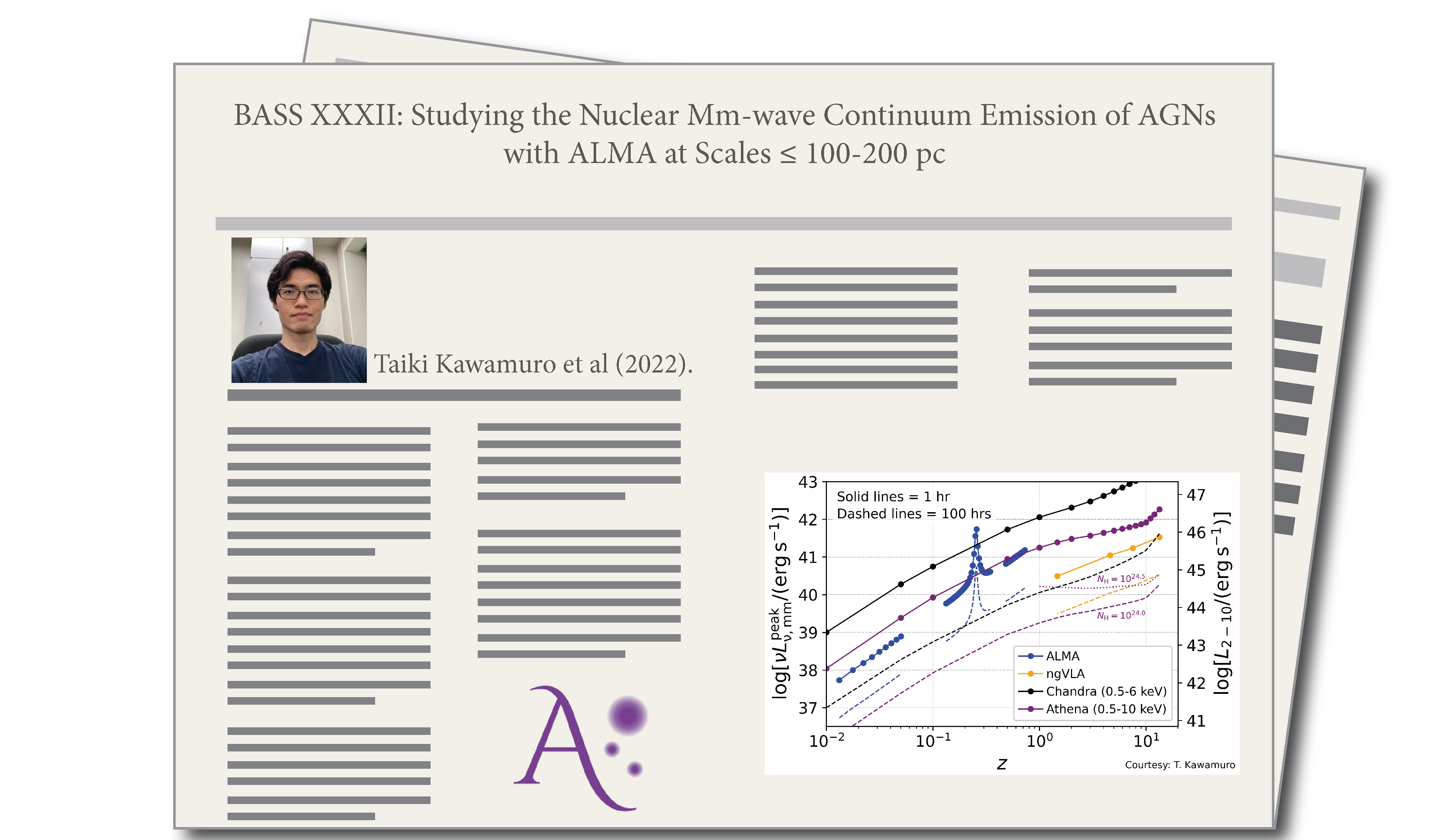
BASS XXXII: Studying the Nuclear Mm-wave Continuum Emission...

By Taiki Kawamuro
The growth history of supermassive black holes is a very hot topic in extragalactic astrophysics. To address that, it is crucial to constrain the number density of AGNs with a sample unbiased for obscuration across a broad range of redshift. X-ray observations have played a leading role in building such samples, thanks to their high penetrating power, although they are still limited for column densities above 1025 cm-2. In our recent study, we investigated whether millimeter-wave (mm-wave) emission may be used to constrain the AGN power. This study was motivated by past studies suggesting that the mm-wave emission may originate in the X-ray corona, and also by the fact that mm-wave is almost free of dust extinction up to ~1026 cm-2. The limit is much higher than the Compton-thick level (1024 cm-2), at which optical depth for hard X-rays (~10 keV) is ~1.
By analyzing sub-arcsec resolution Band-6 (211--275 GHz) ALMA data of 98 nearby (z < 0.05) hard-X-ray-selected AGNs, constituting the largest sample to date with high mm-wave spatial resolution sampling (~ 1-200 pc), we found a significant and tight (0.3-0.4 dex) correlation between mm-wave and hard X-ray emission (Figure 12 in the paper). The correlation indicates that the mm-wave emission on a scale of ≤ 100 pc can be used to find AGNs and measure their luminosities. We moreover simulated observations by ALMA, ngVLA, Chandra, and Athena/WFI for short (1 hr) and long (100 hrs) exposures, and compared the AGN luminosities that they could detect as a function of redshift up to z~10. Athena and ngVLA could be extremely complementary in the future. Athena/WFI will be able to detect faint AGNs even with Compton-thick level obscuration, and it will provide an extremely large sample thanks to its wide field of view (wider than that of ngVLA by more than a factor of ~600). On the other hand, ngVLA is expected to play a significant role by detecting more heavily obscured AGNs that Athena may miss or for which it will not be able to constrain the column density. Thus, synergetic Athena and ngVLA studies could be important to reveal a complete census of AGNs and improve our understanding of the growth history of supermassive black holes.
Access to the manuscript in ADS.

